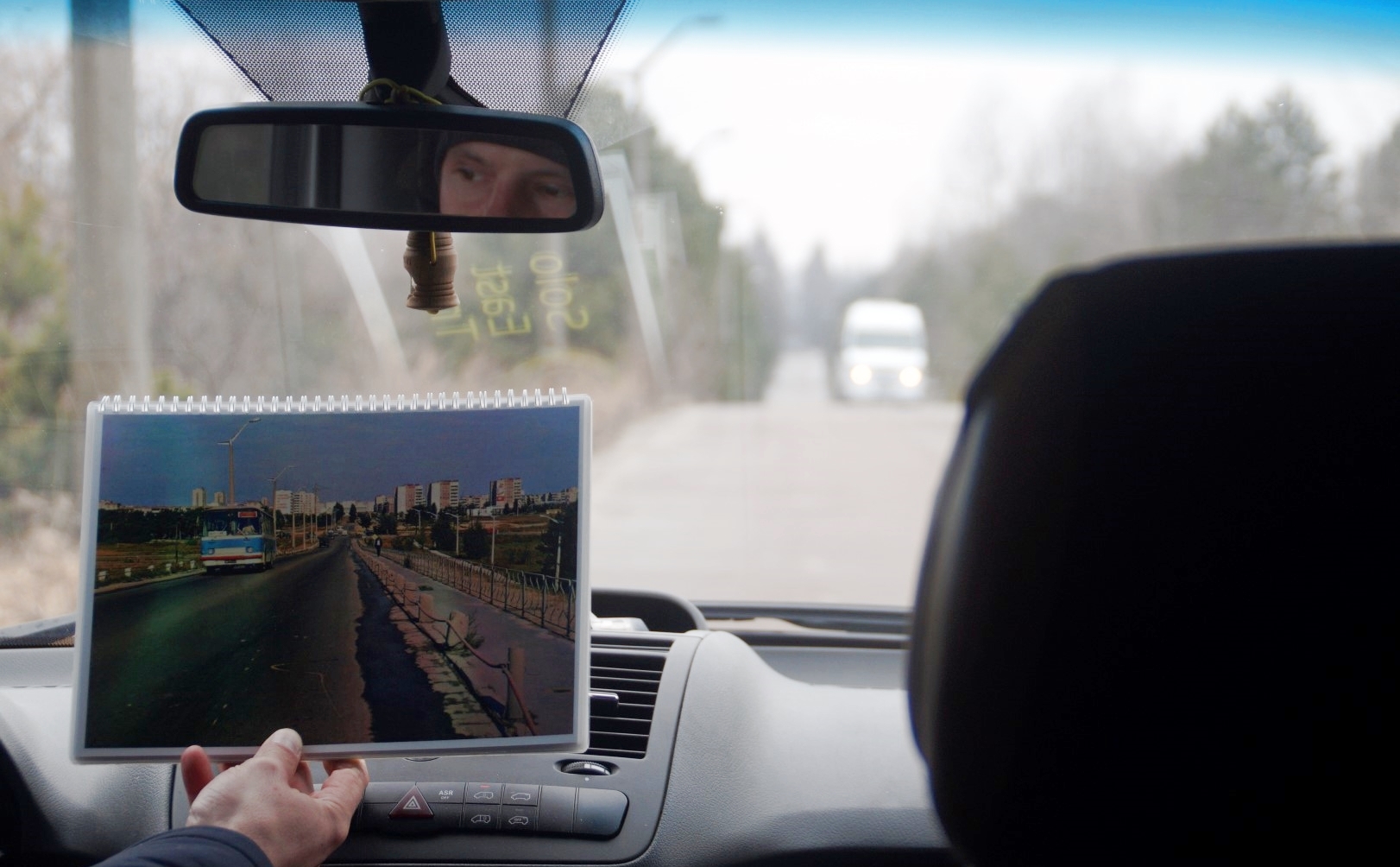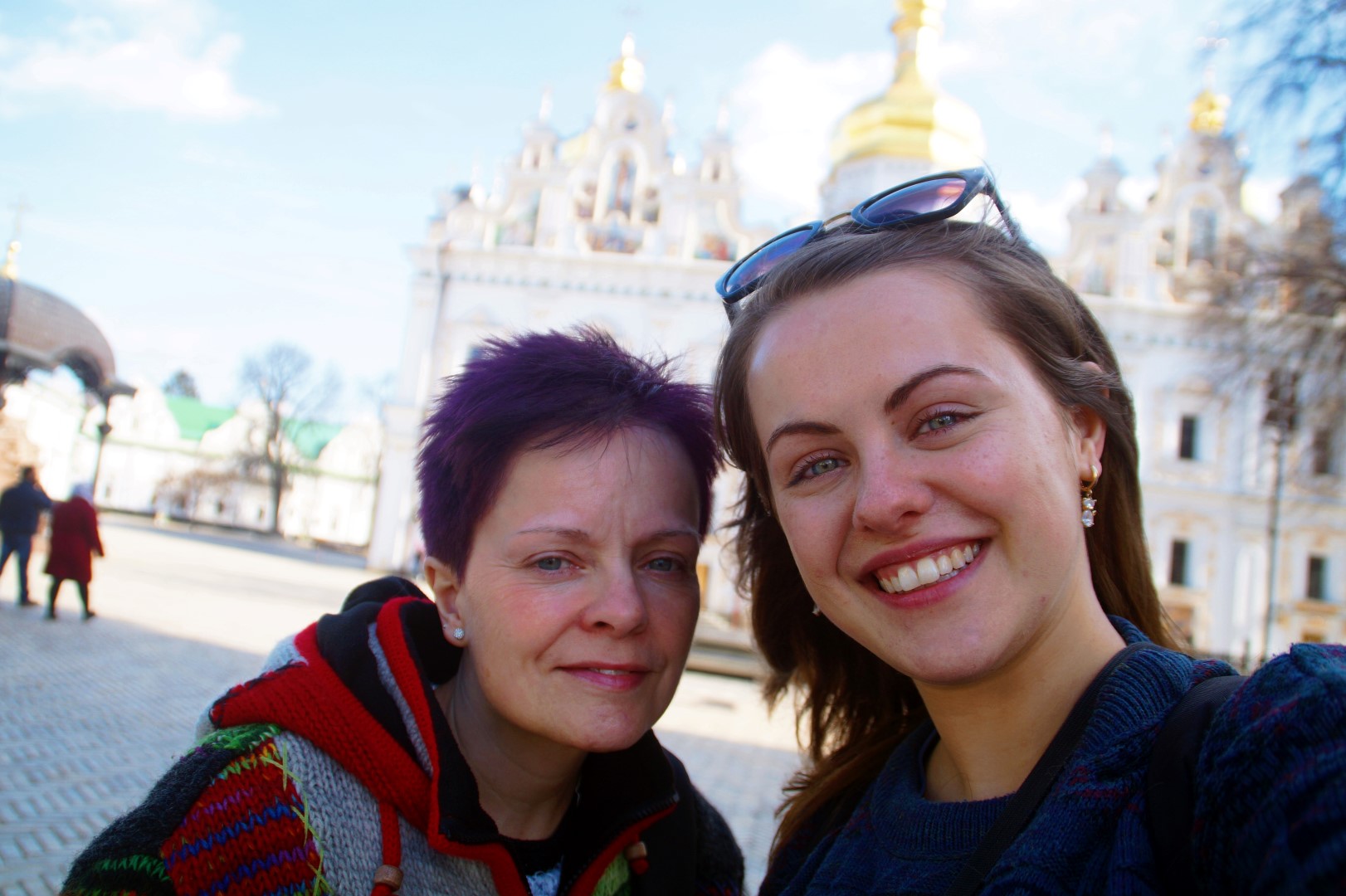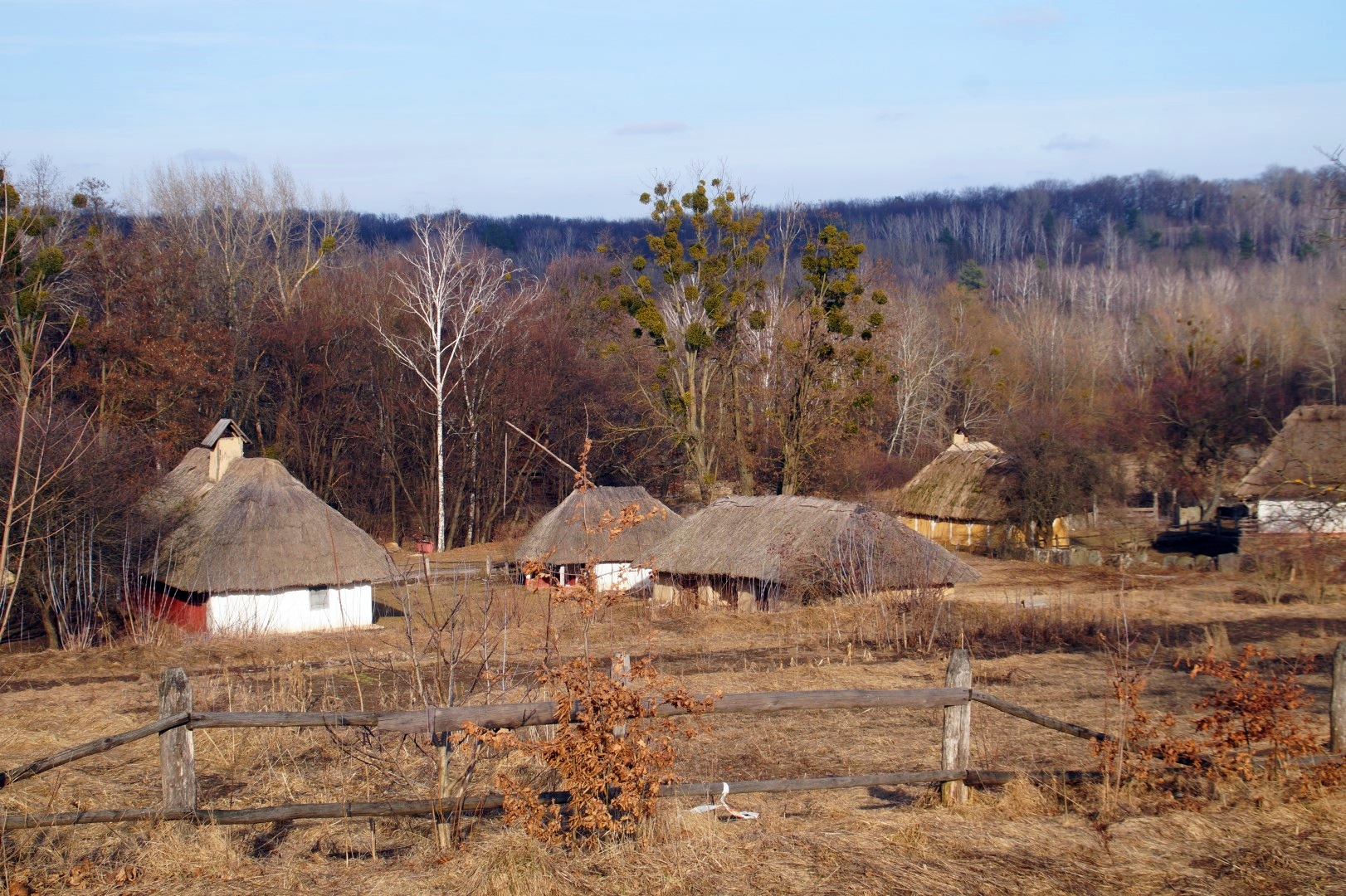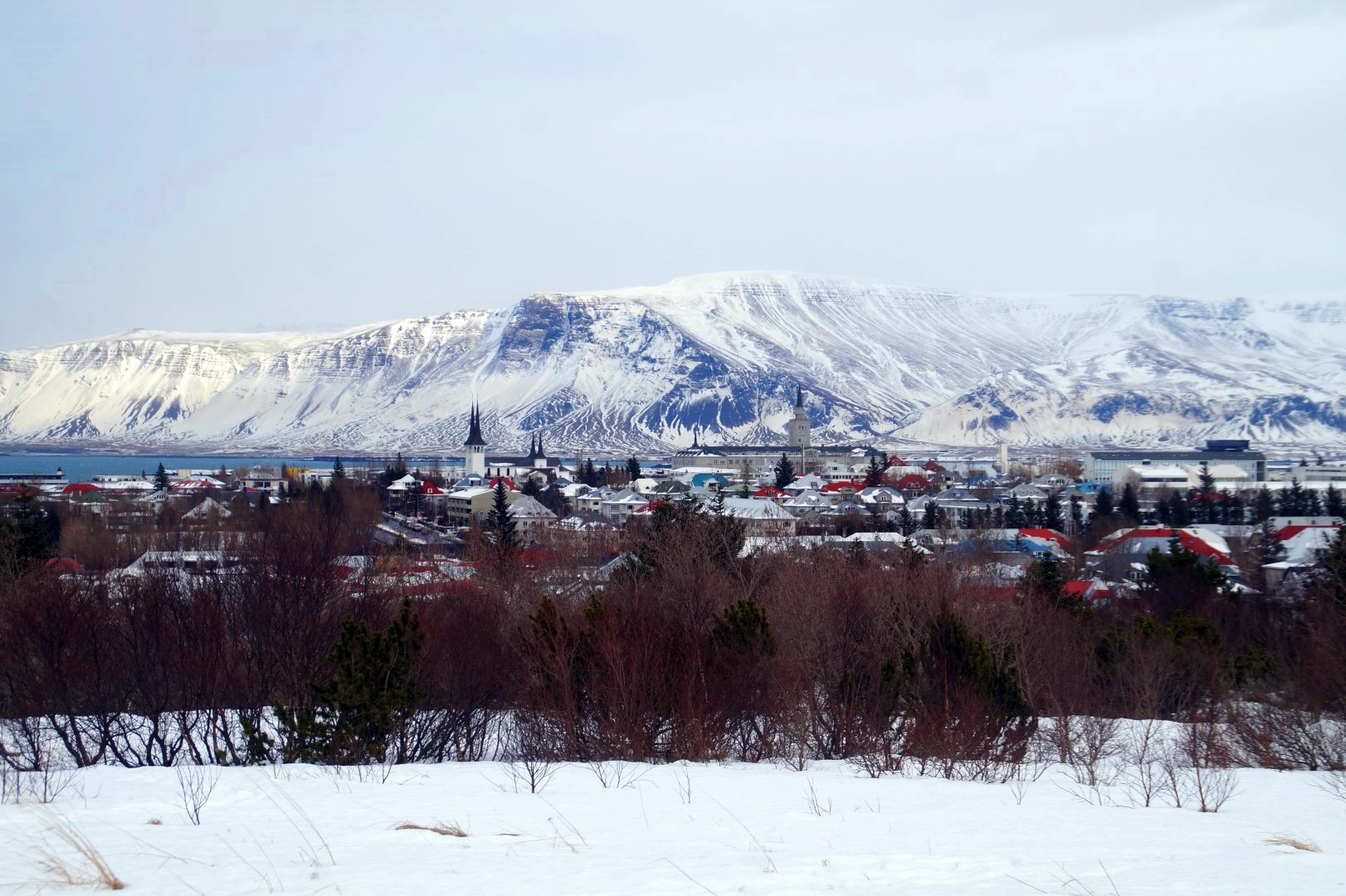IMPORTANT UPDATE, FEBRUARY 2022: Russia invaded Ukraine on February 24th and there’s an ongoing war. Therefore, it’s NO LONGER SAFE to travel anywhere in the country, and this includes Kyiv, Chernobyl and the rest of Western Ukraine! PLEASE DO NOT TRAVEL TO UKRAINE AT THIS TIME!
April 26th 1986, 1.23 AM. The worst nuclear disaster in the history of the world has just occured. Reactor 4 at the Chernobyl Nuclear Power Plant in Northern Ukraine has exploded.
A late-night safety experiment went terribly wrong and caused a sudden power surge which lead to a series of blasts that blew off the roof of the reactor, releasing a lethal cloud of radioactive material that spread across Europe all the way to Wales, and gathered mostly in the nearby city of Pripyat. Despite Soviet officials trying to keep the disaster a secret, it was revealed a few days later when Swedish radiation monitoring stations reported radiation levels that were 40 percent higher than normal – in Sweden! The cloud of radiation that escaped into the atmosphere was equivalent to several times that produced by the atomic bombs dropped on Hiroshima and Nagasaki by the USA at the end of the Second World War.
During the first hours, nobody was aware of the scale of this catastrophe. The first days saw the deaths of 32 people and the hospitalization of 134 servicemen with acute radiation syndrome. Over the years, this explosion and subsequent meltdown of the reactor would come to claim thousands of lives, poison over 70,000 people, cause countless birth defects and unleash a thyroid cancer epidemic in the region. People living in the region are still affected by this today.
The accident forced the evacuation of more than 150,000 Ukrainians and Belarussians, laying waste on an area of 7,769 sq km, contaminating forests and farmland that remain uninhabitable to this day and will continue to be for many years.

Chernobyl and its surrounding ghost towns is a place I’ve always wanted to visit. I think it’s important to learn about historical events, especially disasters, in order to fully comprehend them and to always remember them. This, I believe, will keep humanity from repeating past mistakes.
So on our second day in Ukraine, my mum and I headed to Chernobyl. It’s only possible to go there on a guided tour, so we had booked a day tour with SoloEast. At 8 AM, we were picked up at the Independence Square in Kyiv, and got on the road towards one of the worlds most infamous places.
Radiation level 0,13: At the first checkpoint
At the beginning of the trip, our guide gave us a brief introduction and history lesson of Chernobyl, and told us about the radiation levels. Before we left Kyiv, he showed us that the level was at 0,16 in the city, which is below the 0,30 limit for normal radiation. We would soon be exposed to much higher levels of radiation, so we were all covered up from head to toe to protect our skin.
We made a quick stop at the last gas station before Chernobyl, where we received our geiger counter so we could check the radiation ourselves throughout the day. The journey took about two hours, most of which was spent watching an insigthful documentary about the explosion of Reactor 4.
At 10.15 AM, we arrived at the first checkpoint, the Dytyatky checkpoint at the border of the 30 km exclusion zone. After getting our passports checked and feeding a cute stray dog, we entered the exclusion zone.


Soon after the disaster, the Soviet Armed Forces established an exclusion zone in a 30 km radius in all directions from the power plant. Within the zone, everyone was evacuated and to this day it’s still largely uninhabited, except for a few residents who refused to leave despite Ukrainian officials estimating that the zone would not be safe for human life for another 20,000 years. People that work at the power plant are also allowed to live within the zone, although only for 15 days at a time before taking a 15 day break outside the zone.
The large area has reverted to forest, making it a paradise for wildlife because of a lack of competition with humans for space and resources. More than 400 animal species are known to live and thrive in the area.
Driving through the zone, we saw many abandoned buildings amongst the trees. We drove past the villages of Cherevach and Zalissa, although we wouldn’t have known if our guide hadn’t told us as most of the buildings are literally buried by forest.
Radiation level 0,18: Chernobyl village
Our first stop within the 30 km exclusion zone was the Chernobyl village, located 16 kilometers into the zone. The village, which was home to about 14,000 residents, was evacuated 30 hours after the accident. Most of the residents later moved to the city of Slavutych, which was built for those evacuated from the area.
Today, the village is mostly a ghost town, although some of the residents stayed behind, and it also houses all the workers that administrate the exclusion zone. Some of them work at the fire station in the village, where a memorial commemorates the first fire fighters that were killed as well as the only person who was killed directly from the explosion, as he stood on the roof of the reactor when it exploded. Our guide told us that the workers all get free accommodation in the village, and they must pass a medical test once a year to be able to stay there. I was glad to hear that they take such good care of the workers, as it must be frightening to work in a place with such high risk of radiation sickness, although the village itself is below the normal radiation level because it’s often cleaned.
Believe it or not, there are two general stores, a museum and even a hotel in the village, and the town was actually quite lively that day with people roaming freely on the streets, like nothing terrible had ever happened there. The many abandoned and run-down houses gave it away though. And so did the many memorials, such as an angel blowing a trumpet, refering to a passage in the Bible which describes the end of days, signaled by seven angels blowing trumpets. The symbolism is hauntingly beautiful.
Next to the angel stands two long rows of 188 village signs with the names of all the abandoned villages and cities in Ukraine and Belarus. One thing that really hit me when I saw that was how badly Belarus was also affected by the accident. I actually didn’t know this before, but since Chernobyl is so close to the Belarusian border, 92 villages in Belarus received 60 percent of the radiation (60 percent!!!). In addition to the Ukrainian exclusion zone, Belarus also established a 2200 sq km exclusion zone which is still highly polluted and uninhabitable.
Before leaving the Chernobyl village, we had our lunch at the café and bar, where alcohol is only sold from 7-9 PM – I guess that’s to keep people from getting drunk and into dangerous situations in the zone. I had preordered a vegan meal, which was a strange experience – who’d have thought they’d have vegan food in Chernobyl!? Although our guide told us that all of the food is brought into the village from outside the exclusion zone every day, so they are sure it’s not contaminated.








After lunch, we drove to the Leliv checkpoint and entered the 10 km exclusion zone, also known as the “upper layer”. Radiation levels are much higher within this zone, so people working there must pass a medical check twice a year as opposed to once a year as in the 30 km zone.
We passed the village of Leliv, which was one of 14 village that were purposely destroyed and buried following the disaster. This decision was made thinking it would clear the area of radiation, but unfortunately, it made everything much worse. The highly contaminated buildings seep radioactive isotopes deep into the ground, polluting the soil and water that surround them.
Radiation level 1,54: The Kopachi Kindergarten
Another village that was destroyed and buried is Kopachi, with only two buildings left standing. A series of mounds contain the remains of the rest of the buildings, all topped by a sign with the international radiation symbol. Holding the geiger counter in the air, it showed a radiation level of 1,54, but when we held it to the ground, it was as high as 7,00!
One of the buildings left standing is the infamous kindergarten, which we were allowed to enter. It was incredibly sad to see all the cots and toys, all abandoned in a matter of minutes.








Radiation level 1,44: 1 km from Reactor 4
The Chernobyl Nuclear Power Plant contains four reactors, all of which have been shut down. However, after the explosion at Reactor 4, the remaining three reactors continued to operate, the last one until 2000.
Reactor 4 wasn’t the only reactor with problems as two other accidents occured at two of the other reactors, one before and one after the nuclear disaster. In September 1982, four years before the disaster, a partial core meltdown occured in Reactor 1, although with minor damage. This accident was kept secret for several years and the reactor was repaired and put back into operation. In October 1991, the turbine hall of Reactor 2 caught fire although it did not affect the reactor itself. However, due to the political climate, it was shut down permanently immediately after the incident. Despite all of these accidents, it wasn’t until 2000 that the last reactor, Reactor 3, was shut down and the power plant was officially decommissioned.
The workers on the power plant are currently removing uncontaminated equipment from the other three reactors and cleaning the site, which is scheduled for completion in 2065.


Radiation level 0,92: 270 meters from Reactor 4
We were now just 270 meters from ground zero. Surprisingly, the radiation level was quite low, which is due to all the clean-up work that has been done there over the years.
Following the disaster, the remains of the Reactor 4 building were enclosed in a large cover named the “Object Shelter”. The shelter was built to reduce the further spread of radioactive dust and to protect the wreckage from further weathering. The structure was completed in December 1986, just eight months after the disaster. It’s main purpose was to keep the workers of the other undamaged reactors safe. The structure stood until February 2013, where a large portion of the roof and wall collapsed. Thankfully, no variances in radiation levels were detected following the incident, and the roof was later repaired.
From September 2010 to November 2016, a new and safer structure was built to replace the old shelter, called the “New Safe Confinement”. The shelter was constructed off-site because of the radiation risks and later placed over the reactor over the course of fifteen days. The 270 meter wide, 100 meter high and 150 meter long steel structure now covers the entire reactor as well as the old shelter. If this one collapses one day, it will most likely be covered by an even larger shelter.


Radiation level 0,80: The red forest and the Pripyat road sign
The Red Forest is a 10 sq km area that is one of the most contaminated areas in the world today. The name comes from the red-brown colour of the pine trees after they died within five hours after the disaster because of absorption of high levels of radiation. The trees are no longer standing, as the entire area was bulldozed and buried after the accident, although new trees are now growing on parts of the area.
In the middle of the former forest stands the Pripyat road sign, where radiation is relatively low since it’s cleaned every year on April 27th by relatives of the former residents. However, just five meters away on the other side of the road, we measured radiation levels of up to 6,93 because of the buried trees.
When we later drove through the Red Forest, the geiger counter showed an astonishing radiation level of 5,3 inside the bus!



Radiation level 1,02: The city of Pripyat
After yet another checkpoint, it was time to approach Pripyat, the biggest city within the Chernobyl area, once home to 50,000 people. The city, which is located just a few kilometers from the power plant, was built in the 1970s as a home for the workers at the power plant. It was a very young city with many young families, which is why it contained no less than fifteen kindergartens and five schools. A new funfair was set to open on May 1st, and in general everything was idyllic up until day three following the disaster.
The residents had continued their normal life, not realizing the dangers they were facing by staying in a contaminated city. It wasn’t until day three that an evacuation order for Pripyat was sent out. It wasn’t a day too early as the level of radiation the residents were exposed to would be fatal within four days. 1300 busses were sent to the city to evacuate all 50,000 residents, which took just three hours to complete. The residents were told to leave their belongings behind, as they were sure to return home a few days later.
Of course, as you might have guessed, that didn’t happen. First seven months later, they were able to visit the city to take the few things that weren’t contaminated. Everything else was left as it was on the day of evacuation. The city is now frozen in time.
Like the residents from the Chernobyl village, the majority of them moved to the newly-built city of Slavutych, although efforts were made to clean up the city for 10 years. Unfortunately, it proved impossible, so the city will most likely never be inhabitable again.





Today, the once beautiful city stands as an abandoned ruin increasingly reclaimed by forest. No humans live there anymore, but wildlife thrives there. The main square is completely overgrown and the ferris wheel which was never used stands as a symbolic memorial of the once so idyllic city, itself being one of the most contaminated structures in Pripyat. The swimming pool that was still in use by workers for more than a decade after the accident no longer contains water to swim in. Posters of Lenin and other Soviet leaders for celebration of May Day fill up an entire room. Enormous apartment blocks are reminiscent of how big the city once was. Apartment doors stand open waiting for the owners to return home. Schools still contain open books and well-loved toys, ready for the students to return, but they never will. Clocks all over the city show the time of the accident, 1.23 AM.
The city is eerie to wander about in, and so are some of the things that have happened there since the evacuation. On one of the schools, hundreds of gas masks from the Second World War were laid out in 2014. Nobody knows by who, when or why. Another one of the schools has had everything – all furniture and artifacts – carefully removed. Again, nobody knows by who, when or why this happened, and weirdly enough, none of the things have since been recovered.











Our guide was great to let us see everything we wanted in Pripyat. Some of the places tourists aren’t officially allowed to enter, such as the swimming pool, but he let us do it when we asked. We also did something that most people don’t do. We visited a nine-storey apartment building, looked around some apartments and even walked all the way up to the top to get a panorama view of Pripyat.
It was easy to see that the former residents had rushed to gather some stuff together before having to leave. Furniture was tumbled over and all doors were left open. It was incredible to experience.
Afterwards, it was time to leave the abandoned city and the exclusion zone behind.


Radiation level 0,21: The Duga-1 Array
The last stop of the day was a bit of a drive away, as we headed 50 km northeast of Chernobyl to the Duga-1 array. The Duga radar system was used as part of the Soviet missile defense early-warning radar network, operating from 1976 to 1989. The area was once a top secret military base, but it was opened for pre-arranged visits in 2013.
Although the radar has little to do with the power plant itself, I found it interesting to visit, mainly because the radar was the inspiration for the fence in the Divergent films that I absolutely love! After seeing so many sad sights during the day, it was nice to end the tour on a happier note.



Before we could leave the area completely, we had to go through a radiation control at the Dytyatky checkpoint. Thankfully, none of us had been contaminated and we were free to go. Our guide told us that we would have to leave our clothes (or ourselves!) behind if we had been contaminated, but the risk of that is very low on a one-day tour – the radiation exposure is even less than a transatlantic flight!
Despite the sadness of seeing people’s former homes in complete decay, it had been an insightful and educational day in Chernobyl. I had seen history with my own eyes, experienced a time capsule. My mum, our three tour mates and I got everything out of the tour that we had hoped for and I cannot recommend SoloEast enough.
Leave a Comment
Pingback: My 30 travel goals before 30 – Northtrotter on 15/04/2019
Pingback: My best travel moments of 2019 – Northtrotter on 15/04/2019




2 COMMENTS